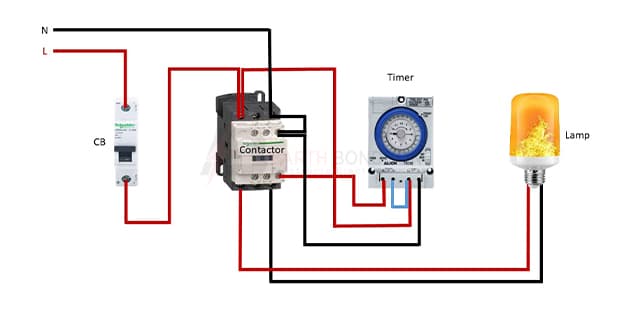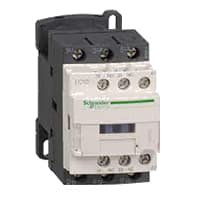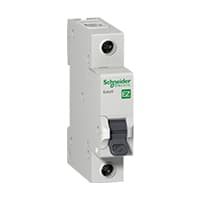Timer and Contactor wiring diagram:
This diagram shows how to make Timer and Contactor wiring. In this circuit, we use an SP MCB ( Single Pole Circuit Breaker ), a magnetic contactor, a timer, and a lamp. First, we need to input Phase to SP MCB and input neutral to the magnetic contactor. Then from SP MCB connect the phase line to the contactor at all points like our diagram. Then from the magnetic contactor connect input power to the timer and lamp. Then this circuit is ready for use. If you want to know more about this circuit diagram please check our youtube video below.
Advertisements
Components needed For this Project:
You can get the components from any of the sites below:
- Magnetic Contactor 40A [See Buy Click Amazon]
- SP MCB 10A [See Buy Click Amazon]
- 8 Pin Timer 220V AC [See Buy Click Amazon]
- CFL Light [See Buy Click Amazon]
*Please note: These are affiliate links. I may make a commission if you buy the components through these links. I would appreciate your support in this way!
Advertisements
Components used to make the Timer and Contactor wiring:
A magnetic contactor is an electromagnetic switching device. It is generally used for controlling 3-phase Motors. The operation of a magnetic contactor is similar to that of a Relay. but a relay is used for low-power or low-voltage connections, and a magnetic contactor is used for high-power or high-voltage connections. As soon as the supply is applied to the magnetic contactor coil. its normally open contacts are closed and normally closed contacts are opened and the associated devices are also operated. This is how a magnetic contactor works.
02. SP MCB:
In single-pole MCB, Switching and protection are Affected in only one Phase. Single phase supply to break the phase only. A single Pole breaker is Typically used with 120-volt Circuits, and a 6-20 amps Miniature Circuit Breaker. They are constructed with one Line Wire and one Neutral wire. A Single Pole switch is the most basic General-Purpose switch that you use to Control a light or another device from one location. These Switches have 2 Brass-Colored screw Terminals Connected to the hot Power source wires. Pole refers to the number of Circuits Controlled by the Switch SP Switches Control only one Switch Electrical Circuit.
A timer is a type of time-switching device that controls and controls Electrical circuits and electrical and electronic devices through time setting (on/off). The timer is basically 8-pin. Like other controlling devices the timer has a coil and when this coil is magnetized, the timer works on/off. The timer has 2 common ends and each common end has normally close and normally open options. When the timer is set by time, the timer trips at the end of that time and turns the common is normally closed (on) to open (off) and normally open (off) to close (on). This is how the timer works.
04. Light:
CFL stands for Compact Fluorescent Lamp which is an improved version of tube lights of earlier days. Like tube lights, it is a vacuum glass tube with fluorescent powder coating which is not as long and straight as tube lights but curved/twisted compact, or small in size. Like a tube light, it has electrodes or filaments at both ends. But in this case, instead of a choke, there is an electronic circuit that drives the Compact Fluorescent Lamp. Because the red wave is less in the light of the Tubelight and Compact Fluorescent Lamp, the object looks a little pale or the correct color of the object does not appear.
Thank You for visiting the website. Keep visiting for more Updates.
Frequently asked questions
Additionally, using a contactor with a timer can help protect the electrical system from issues such as overload or overheating by allowing for scheduled on/off cycles.
Relays are switches that open and close circuit diagrams electromechanically or electronically. the power supply Timers control timing in applications where functions need to be delayed or loads need to be maintained for the predetermined period.
A Timer is a control device that outputs a signal at a preset time after an input and signal are received. The Circuit Diagram pointers on the Timer do not move along with time like the hands of a clock do.
Timers detect when an electrical circuit diagrams should be operated and for what time the work is scheduled and they allow power supply transition. Systems that switch on, use the power supply for a certain period of time after it turns on and this allows components to work according to timing and to put your work in order.
On- and off-delay timers represent the most typical time delay relay of the timers in use. Other types include interval-on-operate, flasher, and repeat power supply cycle timers. Normally open, on-delay timers start and time when the input voltage (power supply) is applied. The output is energized at the end of the delay.
Read more Single Phase Wiring
What is a kilowatt-hour (kWh) | kwh formula | What does kwh mean
Introduction to Electrical Units and CircuitskW and kWh on your electricity bill As your home uses electricity during...
What is the Difference Between kVA | What does KVA mean | kVA formula
Difference Between KVA ExplainedWhat does KVA Mean? There are technical terms aplenty when it comes to generators, and...
Power Factor | Power Unit | Energy | Electricity Unit
Power factor definition | Calculating Power FactorPower Factor Values In a purely resistive circuit, the power factor...





0 Comments
Trackbacks/Pingbacks